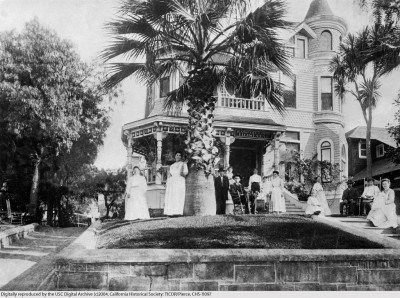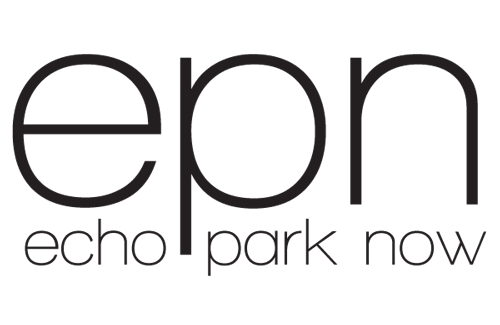
"Exterior view of the first Kaspare Cohn Hospital at one thousand four hundred forty Carroll Avenue"
It was originally spelled with an E and a tilde over the second N. That is the original (Spanish language) spelling of the word. The sign just down the street from me at Sunset and Douglas reads “Angeleno Heights.” Somewhere along the way, some people began to spell it “Angelino”, but no one knows when or why although there are different theories. But the two different spellings do not connote any sort of difference in meaning. That’s just what happens over a period of 120 years.
Angelino Heights (see what I did there?) is one of the oldest neighborhoods in Los Angeles second only to Bunker Hill. It was founded in 1886 by William W. Stilson and Everett E. Hall when they filed for the creation of a subdivision in this elevated part of Los Angeles. In the same year, the Temple Street Cable Railway was built. It ran from Angeleno Heights to downtown and allowed those living in this newly formed suburb to commute from home to work. This line was later electrified making transportation to and from home even easier for Angeleno Heights’ residents.
The first big building boom occurred when the neighborhood was first created which is where all the Victorian homes come from. Then, beginning in 1888, a banking recession stopped all new construction. Another big wave of construction happened in the early 1900s resulting in Craftsman and California bungalow-style homes. Just after World War II, many older homes were split up into multiple apartments to accommodate more people.
In 1983, Angeleno Heights became Los Angeles’ first historic district. Several homes in the neighborhood are Los Angeles Historic-Cultural Monuments and the entire 1300 block of Carroll Avenue is registered as a United States Historic District (and Michael Jackson’s video for “Thriller” was filmed there).
Unfortunately, I could only find one photo of old Angeleno Heights (see above) in our beloved USC Digital Library. But they do have a huge collection of filled-out census forms from 1939! One just has to search by street name to find them. Check out the census forms for Carroll Avenue, W. Edgeware Road and Calumet Ave. It seems there were a fair number of renters living in Angeleno Heights in the 1930s, and rent could cost anywhere from $25 to a whopping $35 per month.
